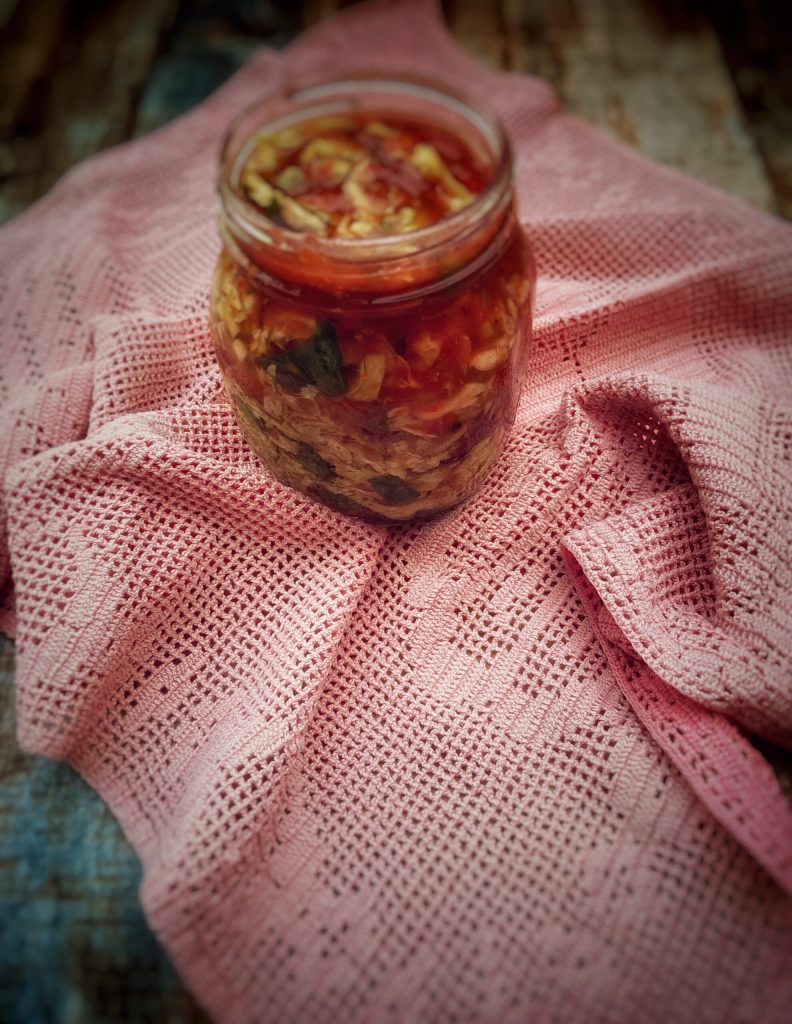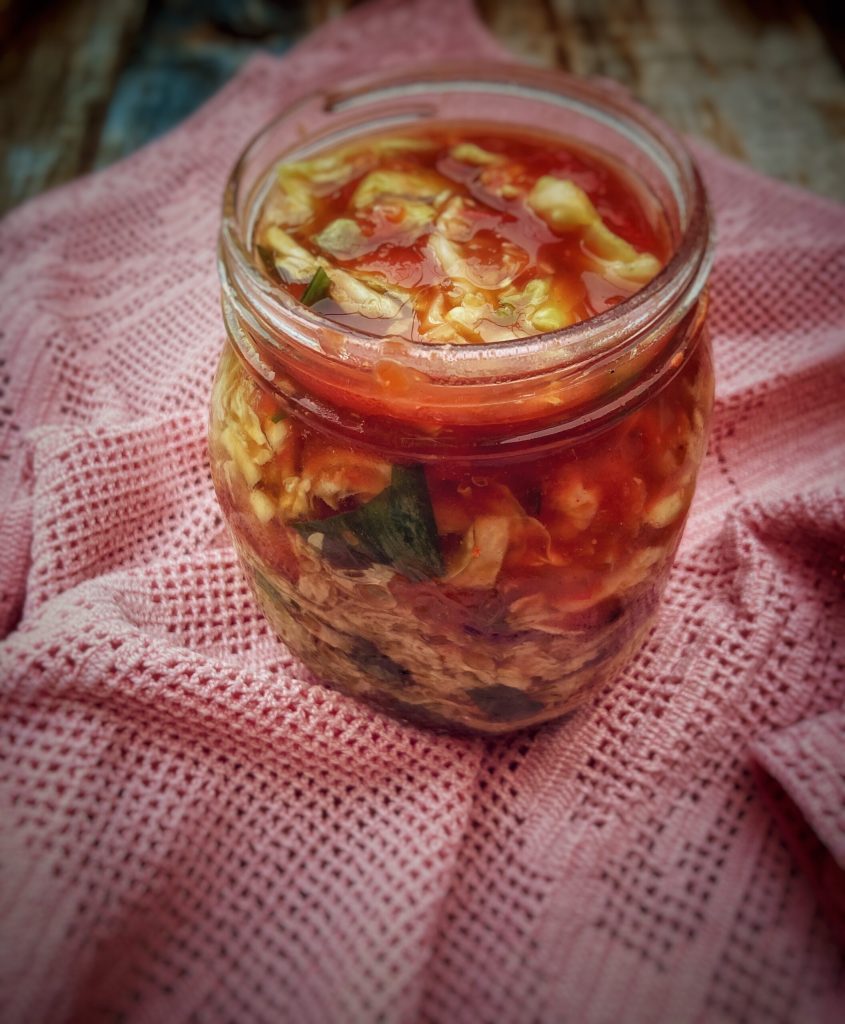Kimchi is a Korean dish made of fermented vegetables with spices (chili powder called Gochugaru, scallions, garlic, and ginger) and fish sauce or fermented shrimp.
There are 180 varieties, each with a different vegetable as the main ingredient, although commonly napa cabbage (but also savoy cabbage and daikon) and Korean radishes are used.
Traditionally, the recipe was passed from mothers to daughters to make them suitable wives for their husbands.
Originally, kimchi was composed only of salted vegetables; in the 12th century, spices were added, and spicy chili was introduced only in the 17th century by Western traders.
In 2001, the Codex Alimentarius published an international standard defining it as “a fermented food using salted napa cabbage as the main ingredient combined with seasonings, undergoing a low-temperature lactic acid production process,” without specifying a minimum fermentation time, nor prohibiting the use of additives.

- Difficulty: Easy
- Cost: Economical
- Rest time: 3 Days
- Preparation time: 8 Hours 10 Minutes
- Portions: 10 servings
- Cooking methods: No cooking
- Cuisine: Korean
- Seasonality: All seasons
Ingredients
- 2.2 lbs Chinese cabbage (or savoy cabbage)
- 2.1 oz scallions
- 0.4 oz garlic
- 0.7 oz Gochugaru (or other chili powder)
- 0.2 oz fresh ginger
- 1/2 cup fermented fish sauce
- to taste fine salt (preferably brine salt)
- 2 tablespoons chili paste (optional)
- 4 tablespoons soy sauce
Steps
Cut the cabbage and its leaves into coarse pieces, soak them in cold water.
Add brine salt (which has larger grains than table salt) and let soak for at least 8 hours, stirring after 4 hours.
Use a weight to prevent the cabbage from floating.
For the brine: 200 g of salt per liter of water.
Note: Some recipes add sugar to enhance fermentation and make the kimchi slightly fizzy.
Rinse the cabbage.
In a bowl, combine: chili paste, soy sauce, fish sauce, and chili powder.
In a container, preferably made of terracotta, add the chopped scallions, garlic, and ginger to the cabbage.
Add the chili mix.
Seal tightly and refrigerate for at least three days before consuming it.

Disputes with China:
In 2012, the Chinese government began banning imports of Korean kimchi, claiming, contrary to the standards defined by the Codex Alimentarius, that it was a derivative of the Sichuan pao cai.
Affiliate link #adv
You can find ready-made kimchi online and in some ethnic cooking stores.
FAQ (Questions and Answers)
How many varieties of kimchi are there?
About 200 variations – some even non-spicy – can use many different vegetables, including cucumber, turnip, pumpkin, and even fruit.
To learn about the 8 most well-known types, click HERE.

